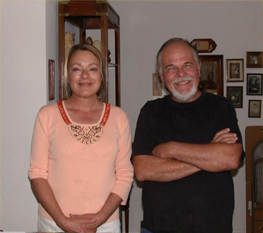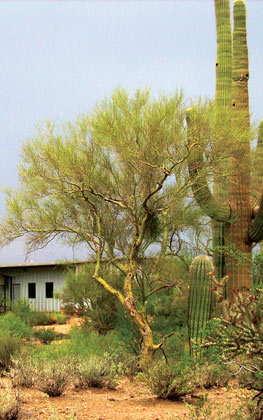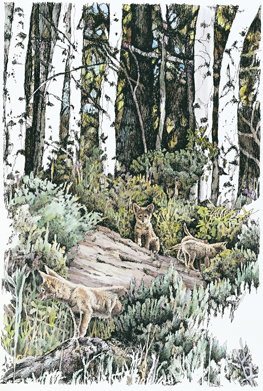2014
APPL Media and Partnership Award, Winner for Best VISITOR GUIDES:
Guidebook to the David T. Vernon Collection
Grand Teton Association
2012
Bay Area Independent Publishers Association, Best History Book:
Fort Baker Through the Years
Hole in the Head Press
2011
APPL Media and Partnership Award, Best Theme:
US Capitol Christmas Tree 2010 Logo
Grand Teton Association
2009
Children's Media Award by Association for Partners for Public Lands 2009 Media Award:
CONDOR, SPIRIT OF THE CANYON Children's Book
by Robert Mesta
Grand Canyon Association
2008
First Place Winner of Glyph Award from Arizona Book Publishers Association for Best Children's Fiction, and Finalist in "Embodying Arizona" category:
CONDOR, SPIRIT OF THE CANYON Children's Book
by Robert Mesta
Grand Canyon Association
2007
First Place Winner of Western Regional Book Design & Production Award Winners For Guide/Travel Book Category:
GRAND TETON NATIONAL PARK GUIDE SERIES
by Charlie Craighead
Grand Teton Association
2005
First Place Winner of National Association for Interpretation 2005 Media Award for Large Book:
SCULPTED BY ICE--GLACIERS IN THE ALASKA LANDSCAPE
by Michael Collier, Author and Photographer; Susan Tasaki, Editor; Lisa Oakley, Alaska Natural History Association, Project Manager.
APPL Awards, +48 pages:
SCULPTED BY ICE--GLACIERS IN THE ALASKA LANDSCAPE
by Michael Collier, Alaska Natural History Association
APPL Awards, Trailguides:
GRAN QUIVIRA TRAILGUIDE
by NPS Staff, Western National Park Association
2004
Mountains and Plains Booksellers Association Regional Book Award:
CREATION OF THE TETON LANDSCAPE
by Love, Reed and Pierce, Grand Teton Natural History Association
2003
National Interpreters Association Award, Trailguide Category:
SITKA TRAILGUIDE
Alaska Natural History Association
2002
APPL Cooperating Assoc. Pub. Competition, Large Books:
YOSEMITE FLORA
Yosemite Association
APPL Cooperating Assoc. Pub. Competition, Guides:
CANYONLANDS SKY ISLAND ROADGUIDE
Canyonlands NHA. APPL Cooperating Assoc. Pub. Competition, 2002
NPS WINTER OLYMPICS NEWSPAPER
Canyonlands NHA, APPL Cooperating Assoc. Pub. Competition, 2002
APPL Cooperating Assoc. Pub. Competition, 2000
2001
CHILKOOT TRAILGUIDE
Klondike Gold Rush National Park, Alaska Natural History Association
2000
Cooperating Association Excellence in Interpretation Awards, Winner of The Director's Award and Joint Venture Publication category:
A LAND IN MOTION: CALIFORNIA'S SAN ANDREAS FAULT
by Michael Collier
Golden Gate National Parks Conservancy and US Geological Survey
2000 Cooperating Assoc. Pub. Competition:
WHO ATE BACKYARD?
Grand Teton Association
2000 Cooperating Assoc. Pub. Competition:
DENALI ROAD GUIDE
Alaska Geographic
2000 Cooperating Assoc. Pub. Competition:
WALKING AND EXPLORING SAN FRANCISCO'S PACIFIC SHORE
Golden Gate National Parks Conservancy
YOSEMITE FIELD SEMINAR CATALOGUE
Yosemite Association
American Association of Museums:
YOSEMITE FLORA SPONSORSHIP BROCHURE
Yosemite Association, American Association of Museums, 2000
Other books and publications that have been awarded:
SURVIVORS IN THE SHADOWS
Northland Publishing, Western Book Award, 1994
RAVENSONG
Northland Publishing, First place Trade Book, Rocky Mountain Book Publishers Association, 1993
TRADITION AND INNOVATION
Yosemite Association, American Assoc. of Museums Award, 1992 NPS and from APPL Cooperating Assoc. Pub. Competition, 1992
COMMON INSECTS
Colorado National Monument, NHA NPS Cooperating Assoc. Pub. Competition, 1992
ALCATRAZ, MUIR WOODS & FORT POINT ILLLUSTRATIONS
American Institute of Graphic Arts Certificate of Excellence, 1992 San Francisco Advertising
Club Silver Award, 1992 NPS Cooperating Assoc. Pub. Competition, 1992
PUEBLO BIRDS AND MYTHS
Northland Publishing, First place Trade Book, Rocky Mountain Book Publishers Association, 1991
BLACK BEARS
Great Smoky Mt. NHA PICA Award, 1991 NPS Cooperating Assoc. Pub. Competition, 1992
TRAILGUIDES COLTER BAY MAP AND GUIDE
Grand Teton NHA National Interpreters Assoc. Award, 1995
MUIR WOODS TRAILGUIDE
Golden Gate National Parks Conservancy NPS Cooperating Assoc. Pub. Competition, 1992
ROADGUIDE TO ARCHES
Canyonlands NHA NPS Cooperating Assoc. Pub. Competition, 1992
MEMBERSHIP BROCHURE
Sequoia NHA NPS Cooperating Assoc. Pub. Competition
1992 FIELD SEMINARS
Yosemite Association, NPS Cooperating Assoc. Pub. Competition, 1992
POSTERS TONTO PLATFORM
Grand Canyon Association, NPS Cooperating Assoc. Pub. Competition, 1992
THE NATURAL HISTORY OF MONTEREY BAY
Monterey Bay Aquarium, First place, Travel book, Rocky Mountain Book Publishers Association, 1998




